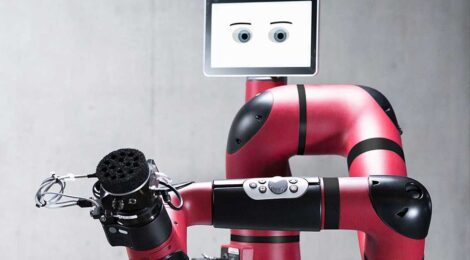
China Robotics Rise 1 – Implementation of strategic policies
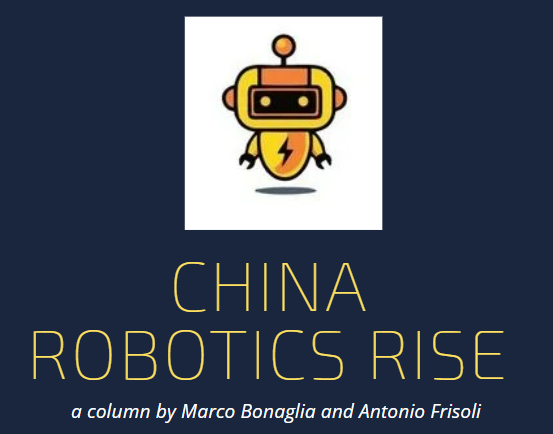
In the past articles of the series “from Quantity to Quality” we explored the innovation occurring in China and the shift of its economic growth from an old model to a new one, based on innovation, R&D and the implementation of new technologies. Today we take under our radar a new topic, that is transforming China and putting the country at the top of the global race for becoming a science and technology superpower: the China rise in industrial robots.
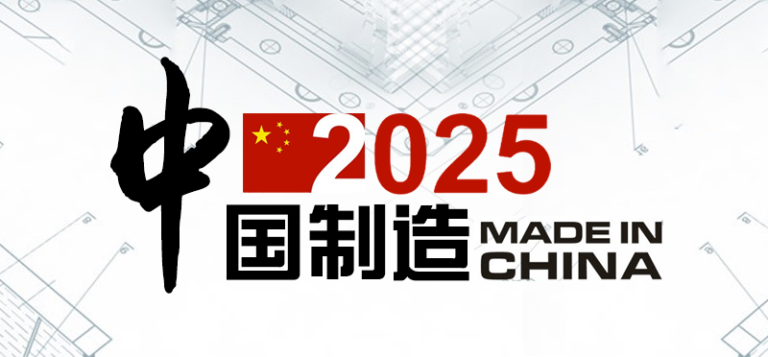
From Made in China 2025 to the present
According to many sources, China is the world’s largest user of industrial robots, and in the past decade this trend has been designed and subsidized by many governmental policies and programmes.
The Chinese government has in fact promoted the production and use of industrial robots in recent years. Government policies are motivated by the challenges of labor costs and labor shortage, as well as the imperative to lead a new wave of Industrial revolution.
One significant step towards this direction has been the launch of Made in China 2025, which set national goals of producing 100,000 industrial robots per year and achieving a density of 150 robots per 10,000 workers by 2020, which would triple the robot density in the manufacturing sector reported for 2015.
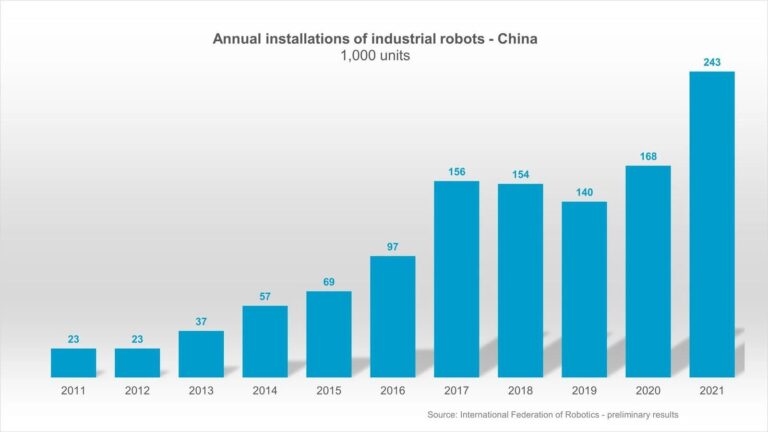
According to the German think tank Merics, robots are listed among the ten priority industries of the Made in China 2025 strategy, where China is determined to increase its competitiveness and domestic capabilities. In 2020, China installed 168,377 industrial robots, accounting for 44 percent of global installations. Demand for robots in China will likely remain strong as the central government increasingly relies on industrial upgrading as a form of stimulus as opposed to investment in infrastructure and real estate.
In 2016, the Ministry of Industry and Information Technology, the National Development and Reform Commission and the Minister of Finance launched the Robotics Industry Development Plan (2016-2020) and in the following years, many documents have been shared with the public on the need to increase the production, diffusion and adoption of industrial robots. Together with other strategic sectors, the robotics one has been at the cornerstone of a strategy to make China a science and technology superpower. Other strategic sectors are artificial intelligence, aerospace, big data, and many others.
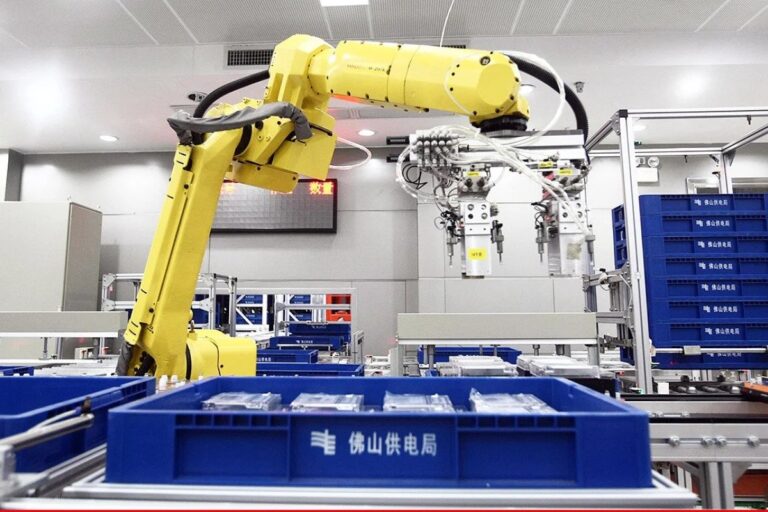
Most recent policies and goals
The most recent official document issued by the Chinese government is the China’s Robot+ Initiative, included as a new measure in the 14th FYP for the Robotics Sector to encourage the development of new robot products and services and accelerate their adoption and demand.
As underlined by Merics, these are the main goals of the initiative:
- Double the density of industrial robots from 2020 levels to reach 492 robots per ten thousand manufacturing workers by 2025 (this goal was originally set in 2022)
- Achieve breakthroughs in more than 100 kinds of innovative robotics application technologies and solutions
- Promote over 200 robotic applications, focusing on more advanced and innovative use cases
- Establish “Robot+” application benchmark enterprises, and construct several application experience as well as test and verification centers
Before that, another document, of high importance, was issued in December 2021, the 14th FYP for the development of the robotics sector. The goal of the document were:
- Achieve breakthroughs in robotics core technologies and high-end products; increase the performance and reliability of key components to the level of foreign components
- Grow the robotics industry such that revenue increases by over 20 percent annually
- Foster the development of innovative and fast-growing “little giant” enterprises; establish three to five internationally influential industry clusters
- Double the density of robots in the economy, to over 492 robots per 10,000 employees, up from 246 in 2020
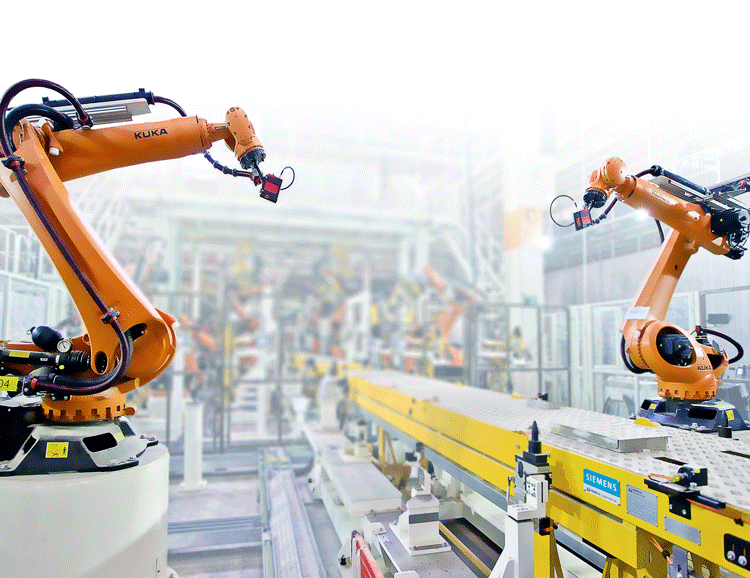
The key to success – Automotive and electronics
Two sectors that are crucial for the development and rise of China robotics are the ones of automotive and electronics. China is a global leader in the production and consumption of automotive and electronics, the two leading industries in robot adaptation. Regarding the first sector, China has been the largest national producer of automobiles units since 2008: indeed, since 2009 annual production of automobiles in China has exceeded that of the United States and Japan combined. China also clearly dominates the global electronics industry. For these reasons, China will probably play an even more important role in the robot market in the future, counting on two strategic sectors where it has already a global leadership.
General considerations
In general, we can say that the Chinese Government has identified the robotics industry as a strategically important sector, and has initiated various programs and subsidies to encourage the use of robots as a way of transforming and upgrading China’s manufacturing industries. An interesting aspect to underline is that Chinese citizens see robotics and automation as a positive phenomenon because the advance in science and technology are believed by many to be essential for China’s rise as world power. This reaction is very different from the one in the Western world, where many are scared by the impact of automation, artificial intelligence and robotics on their jobs.
Another general observation, is that the rise of robots has accompanied a decline in the growth of the working-age population and an increase in wages, suggesting that the rising cost of labor is one underlying driver of robot usage in China.
In the second part we will bring more data and discuss China Robots Rise with Professor Antonio Frisoli from Sant’Anna School, stay tuned!
Article by Marco Bonaglia




